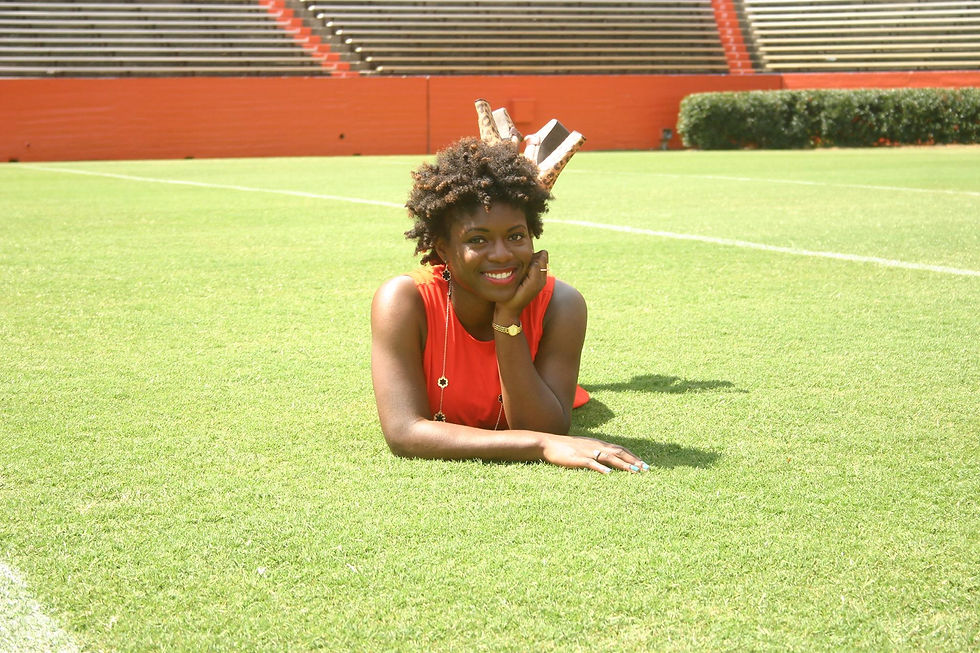


Michelle Hylton
Educator - Lifelong Learner
Number and Operations
1. Problem: Kendra is making ½ of a recipe. The full recipe calls for 3 ¼ cup of flour. How many cups of flour should Kendra use?
Methods:
-
Drawing a picture
-
Using a number line
-
Computing a product
-
Use the distributive property
-
Use decimal numbers
Promotes Mathematical Understanding: Although this problem deals with volume, students are presented with the opportunity to transition to a more abstract understanding of fraction multiplication.
Solution: Using the number line method we could first plot a point at 3 ¼ to represent the amount of flour used in the whole recipe. If we place another plot between 0 and 3 ¼, we can see that the point is halfway between 1 ½ and 1 ¾. To identify this point, we can put tick marks between each of the tick marks representing fourths. Through this, we see that 1 5/8 is halfway between 0 and 1 ¾. Therefore, Kendra should use 1 5/8 (1.625) cup of flour.
Problem Source: https://www.illustrativemathematics.org/illustrations/296
Web 2.0 Tools: Google Draw, Number Line by the Math Learning Center, Educareations Whiteboard App
2. Problem: Alysha really wants to ride her favorite ride at the amusement park one more time before her parents pick her up at 2:30pm. There is a very long line at this ride, which Alysha joins at 1:50pm (point A in the diagram). Alysha is nervously checking the time as she is moving forward in the line. By 2:03 she has made it to point B in line. What is your best estimate for how long it will take Alysha to reach the front of the line? If the ride last 3 minutes, can she ride one more time before her parents arrive?
Methods:
-
Dividing
-
Multiplying
Promotes Mathematical Understanding: This task promotes mathematical understanding in that it presents students with a problem to solve in context that can be solved multiple ways. This problem is also a great illustration of MP4- Model with mathematics in that it is not just an authentic problem, but students have to make simplifying assumptions in order to the problem (for example, this problem assumes that the line moves in a uniform way).
Solution: Dividing- From the diagram, we can see that it took Alysha 13 minutes to move from point A to point B, which is 1/5 of the entire line. If the line continues to move in a similar way, we can say that it will take her 5 times as long to move to the front of the line. From this we can estimate that it will be a total of 65 minutes (13 minutes divided by 1/5 = 65 minutes) for Alysha to get to the front of the line. Knowing that Alysha is suppose to meet her parents 40 minutes from when she got in the line, when can say that she will not be able get one the ride again.
Problem Source: https://www.illustrativemathematics.org/illustrations/932
Web 2.0 Tools: Educreation Whiteboard App, Sketchpad
3. Problem: Julius has 4 blue marbles. If one-third of Julius’ marbles are blue, how many marbles does Julius have? Draw a diagram and explain.
Methods:
-
Draw a picture representation
-
Use a tape diagram
Promotes Mathematical Understanding: This task promotes mathematical understanding in that it is extending student learning of division and pushing them to look at the division through a “how many in each group” point of view.
Solution: Knowing that 1/3 of Julius’ marbles are blue, we can say that 2/3 of his marbles are other colors. This tells us that Julius has two times as many marbles of other colors as he does he has blue marbles. We know that Julius has 4 blue marbles, thus we can say that he has 8 marbles of other colors, which means Julius has 12 marbles in total. Through this we can create the division problem: 4 divided by 1/3 = 12 marbles.
Problem Source: https://www.illustrativemathematics.org/illustrations/1120
Web 2.0 Tools: Educreation Whiteboard App, Google Draw, Sketchpad